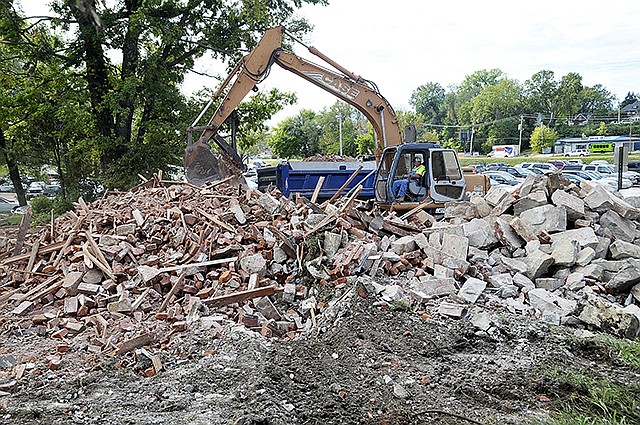The Jefferson City Housing Authority has bought and razed the building that was the last piece in the city's land-acquisition puzzle to clear the way for a planned conference center just east of Capitol Plaza Hotel.
Although the city is no longer actively pursuing a conference center, the Housing Authority's recent acquisition of the property in the 200 block of W. McCarty Street could clear the way for a large development in the future.
This week, a contractor demolished 229 W. McCarty St., which the Housing Authority bought several months ago from Clifford and Mary Schnieders for about $140,000, Housing Authority Director Allen Pollock said. The city had tried to buy the property since around 2008, but had been unable to come to an agreement with the couple.
The Housing Authority owns 10 tracts of land in that area, Pollock said, but has no current development plans. It has been acquiring land in the area for some 40 years, he said.
Part of the Housing Authority's mission, as authorized by state statute, is "land clearance for redevelopment authority." The federal government initially funded that mission through urban renewal in the 1960s, but the Housing Authority now only has funding to purchase property when it sells other property.
Former Mayor John Landwehr had orchestrated plans to clear the area for a planned conference center. On Tuesday, he said the acquisition of the property still is an important step for the city.
"It's very difficult to assemble parcels within an urban center to create the opportunity for large projects," he said. "And in the past, going back 30 and 40 years, that block has been looked upon as a great opportunity. And the Housing Authority and city have consistently worked toward the goal of making a large space available for some type of project. So I'm glad to hear that this final piece has been acquired."
The one remaining structure on the block is the Tergin Apartments, 201 W. McCarty St., but Landwehr said the structure wouldn't need to be acquired for a large development in the area.
Built in 1937, the Tergin Apartments serves as one of the few examples of Art Deco architecture in Jefferson City.
The apartments were added to the National Register of Historic Places in 1999, although that designation does not protect the building from future demolition.
The city's Historic Preservation Commission recently released the property at 229 W. McCarty St. for demolition, noting that it likely could be rehabilitated, but that the vacant apartment building had lost its neighborhood context, since the historic properties once to its east were razed a decade ago.
Steve Veile, president of the Historic City of Jefferson, agreed that the conversion of 229 W. McCarty St. to apartments lessened its historic value. He said his organization had tried unsuccessfully to save other, more historic, properties in the area.
"From our point of view, looking at a historical perspective, the battle for West McCarty Street was lost a long time ago," Veile said. "We fought long and hard to save many of the more historic structures."
He said the razing of the structure was "almost inevitable," but that it does make him concerned for the future of the Tergin Apartments, when development plans are made.

